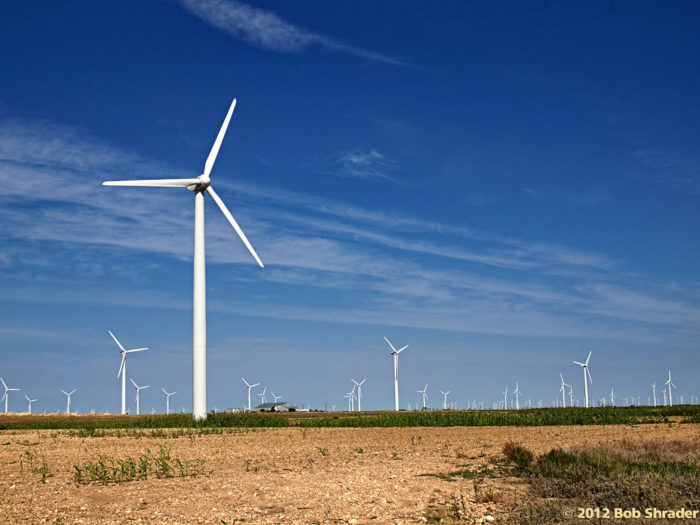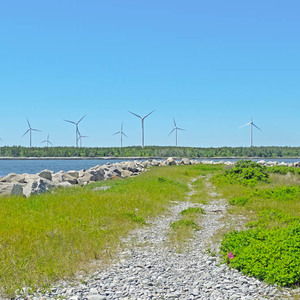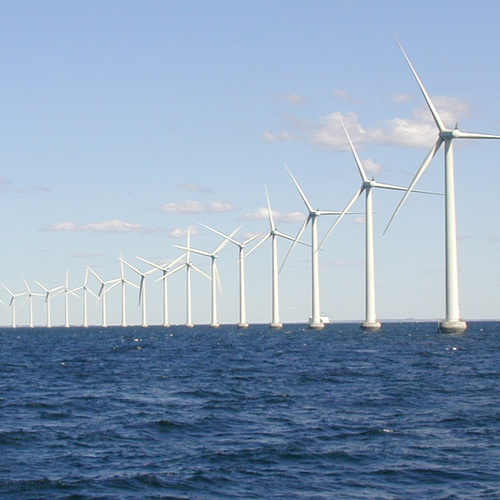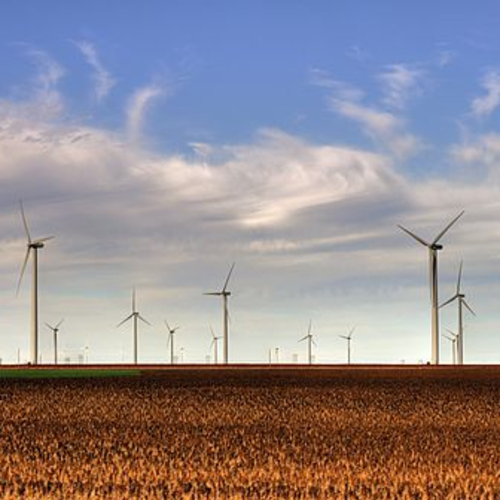
Image Credit: Bob Shrader / CC BY-ND 2.0 / Flickr
Last year was a big one for wind power in the U.S. For the first time, the total installed capacity of the country’s wind farms exceeded that of hydroelectric projects to reach a total of 82,183 megawatts — enough to run some 24 million American homes.
The website Proud Green Building reported the wind industry installed 6,478 megawatts in the fourth quarter of the year alone, according to a market report from the American Wind Energy Association.
Hydro has long dominated the renewable energy picture in the U.S. but, as The New York Times reports, big hydroelectric projects aren’t being built these days even as the amount of wind capacity increases rapidly. Wind capacity has more than tripled since 2008.
Hydro still sends more of its potential output to the grid than wind — generating nearly 36% of its potential versus the 32% of wind — but improvements in turbine and blade design are making newer wind farms more efficient. The Department of Energy says that wind farms build in 2014 ran at 41.2% of capacity the following year, according to The Times.
The U.S. Department of Energy says that 8,203 MW of wind capacity was installed in 2016. Texas by far has the most installed capacity, with 20,321 MW. (The next closest state is Iowa with 6,917 MW, then Oklahoma with 6,645 MW.)
The surge has helped make wind turbine technicians the fastest growing job in the U.S. over the last decade. More than 101,000 people were employed in the industry in 2016, DOE said, up 32% from the previous year.
In another report on wind energy, Clean Technica reports that wind supplied more than 5.5% of the country’s electricity in 2016. The 226 million mega-watt hours of electricity represented an 18% increase over 2015. In five states, wind produced more than 20% of total electricity, reaching 36.6% last year in Iowa and 30.3% in South Dakota.
Clean Technica said that nearly all U.S. wind turbines are located in rural areas and have been responsible for a “massive surge in investment in rural America” — $13.8 billion in new turbines last year. The influx of cash has helped pay for roads, teacher salaries, and emergency services.
Solar’s growth rate also is very robust
Solar also had a great year, with 14,626 megawatts of new capacity coming online — about twice as much as the previous year, according to a report in The Mercury News. The Solar Energy Industries Association said that total capacity had reached nearly 36 MW through the third quarter of the year, but those numbers will go up when SEIA releases its full annual report later in the week.
While the federal solar Investment Tax Credit and falling prices are increasing the number of solar installations, GTM Research says that residential solar leases appear to have peaked and are now outnumbered by purchases. In 2014, 72% of the residential market was represented by solar leases; by the last quarter of 2016, that had fallen to 47%, as ownership pulled ahead.
Among the reasons, GTM said, was a push by Tesla to transition more of the installations by subsidiary SolarCity from lease to purchase to generate more upfront cash, and a decline of third-party ownership in California, a major solar market, to 36% in the fourth quarter. That number was as high as 75% in mid 2013.
Renewable energy provides about 13% of the electricity produced in the U.S., according to the U.S. Energy Information Administration. In 2015, wind generated about 5% of total electricity; solar accounted for about 1% of the total. Fossil fuels — oil, natural gas, and coal — still account for more than two-thirds of total U.S. electricity.
Weekly Newsletter
Get building science and energy efficiency advice, plus special offers, in your inbox.















0 Comments
Log in or create an account to post a comment.
Sign up Log in